The spider plant (Chlorophytum comosum) is one of the most beloved houseplants worldwide, celebrated for its graceful arching leaves, ease of care, and ability to thrive in a variety of indoor environments. Known for its air-purifying qualities, the spider plant is not only a visually appealing addition to any home or office but also promotes healthier indoor air.
This article provides a comprehensive guide on how to care for spider plants, detailing proper watering, lighting, soil preferences, fertilization, pruning, propagation, and pest management to achieve lush, vibrant, and long-lasting greenery.
Introduction
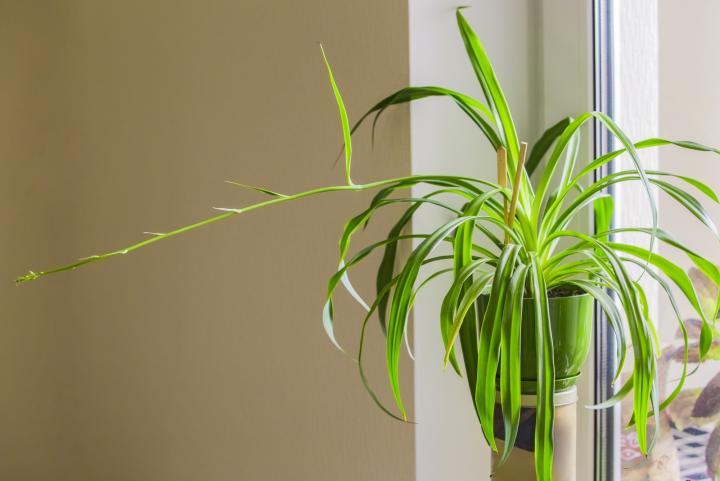
Spider plants are versatile and resilient, making them an ideal choice for beginners and experienced gardeners alike. Their long, slender leaves with striking green and white stripes cascade gracefully, creating a natural, lively ambiance. In addition to aesthetics, spider plants filter indoor toxins like formaldehyde and xylene, contributing to a healthier living environment.
By understanding their specific care needs, plant enthusiasts can ensure maximum growth, vibrant foliage, and a flourishing plant display. This guide will cover every essential aspect of spider plant care to help you maintain healthy, thriving greenery indoors.
1. Selecting the Right Pot and Soil
Pot Selection
Choosing the right pot is critical for a spider plant’s health:
- Material: Ceramic, terracotta, or plastic pots are suitable
- Size: Start with a pot slightly larger than the root ball; avoid oversized containers that retain excess moisture
- Drainage: Ensure drainage holes are present to prevent root rot
Soil Requirements
Spider plants prefer well-draining, nutrient-rich soil:
- Use a standard potting mix with peat moss or coco coir for moisture retention
- Add perlite or sand to improve aeration
- Avoid heavy garden soil, which can compact and trap excess water
A proper pot and soil setup encourages healthy root development, which is the foundation for lush, vibrant foliage.
2. Watering for Healthy Growth
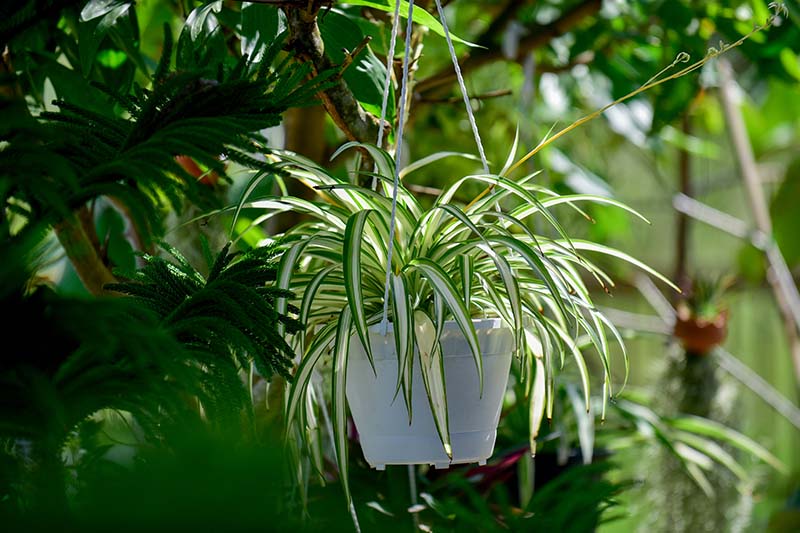
Watering is a key factor in spider plant care, as both overwatering and underwatering can affect growth.
Watering Guidelines
- Water when the top inch of soil feels dry
- Reduce watering in winter when growth slows
- Ensure excess water drains to avoid waterlogged roots
Tips for Optimal Watering
- Use room-temperature water to avoid shocking roots
- Water evenly around the base for uniform root growth
- Consider using a moisture meter for precise monitoring
Proper watering encourages strong root systems and long, arching leaves, the hallmark of a healthy spider plant.
3. Light Requirements
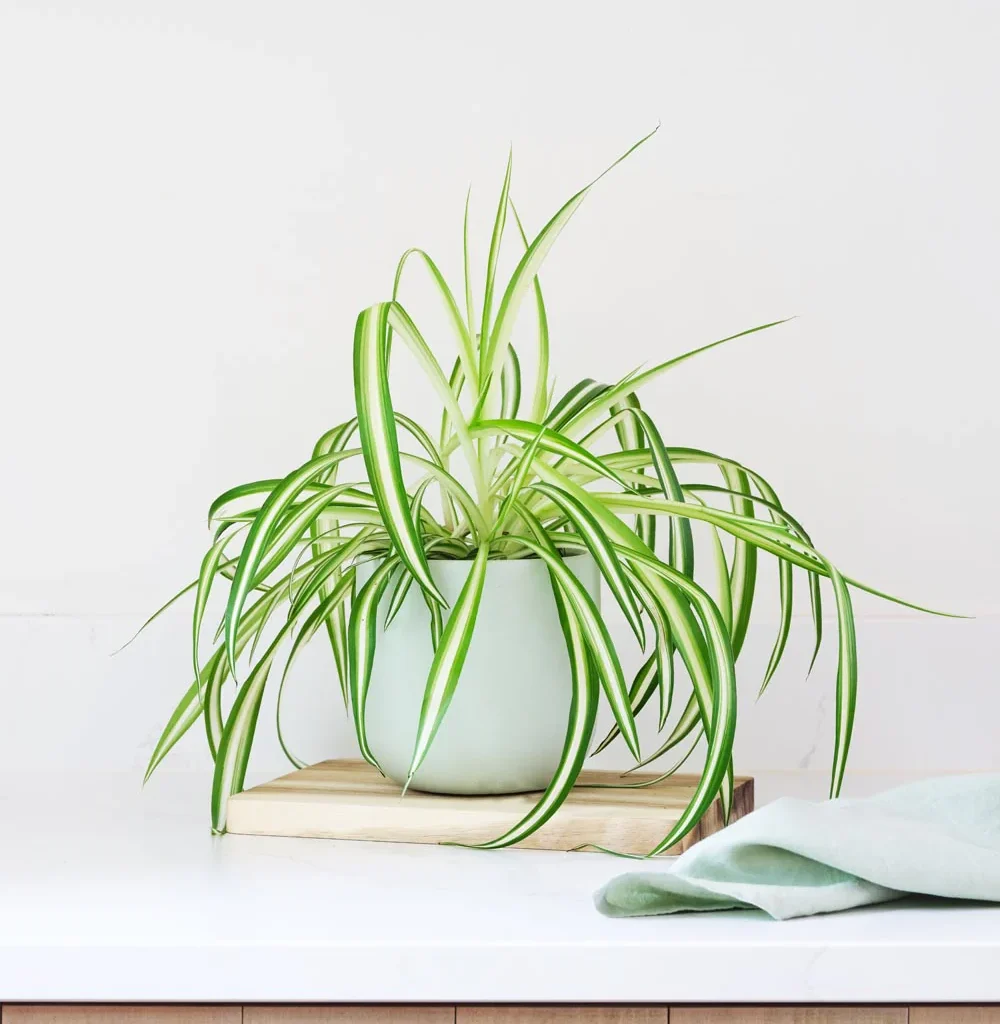
Spider plants are adaptable to various lighting conditions, but light quality affects growth, leaf color, and variegation.
Ideal Light Conditions
- Bright, indirect light: Promotes vigorous growth and enhances leaf variegation
- Moderate to low light: Plant survives but growth slows, and leaves may lose some coloration
- Direct sunlight: Can scorch leaves; avoid placing the plant in harsh afternoon sun
Placement Tips
- Place near east or north-facing windows for consistent light
- Rotate the plant occasionally for even growth
- Supplement with artificial grow lights if natural light is insufficient
Proper lighting ensures healthy foliage, vibrant leaves, and extended arching vines.
4. Fertilization
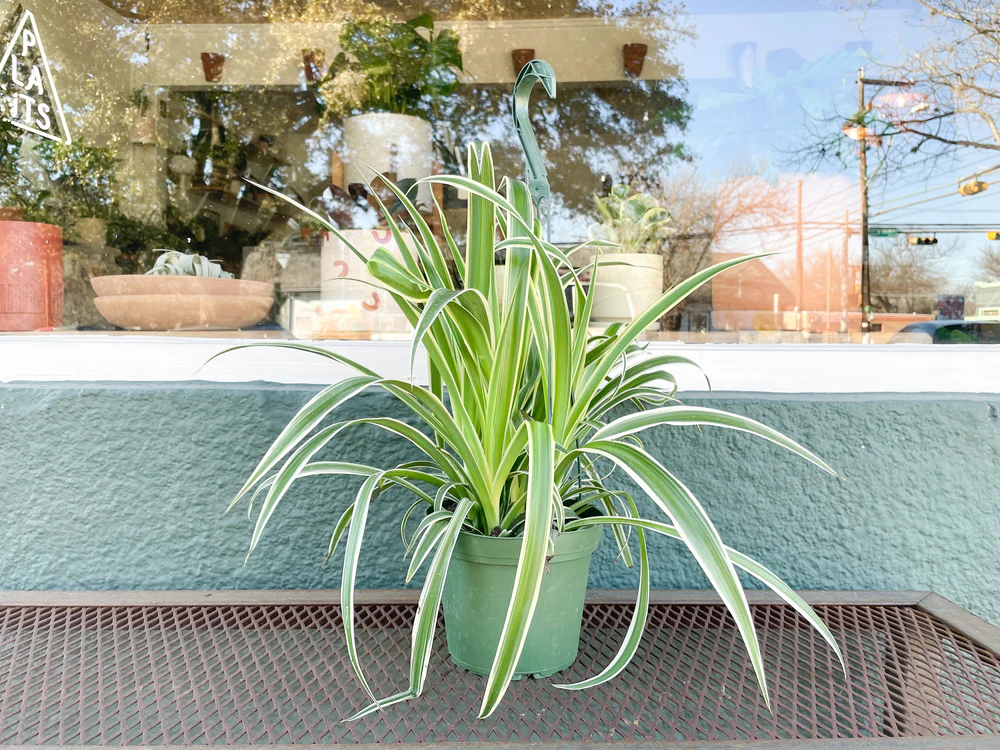
Although spider plants are relatively low-maintenance, occasional fertilization supports lush, vibrant growth.
Fertilizer Guidelines
- Use a balanced liquid houseplant fertilizer (10-10-10) every 4–6 weeks during the growing season
- Reduce feeding in fall and winter when growth slows
- Avoid over-fertilization, which can burn roots or cause leaf tip browning
Tips for Effective Fertilization
- Dilute fertilizer to half the recommended strength for young plants
- Fertilize after watering to prevent root burn
- Use organic options like compost tea or worm castings for a natural growth boost
Fertilization encourages new leaf growth, healthier roots, and stronger, arching foliage.
5. Pruning and Maintenance
Pruning and maintenance are essential to keep spider plants looking neat and thriving.
Pruning Guidelines
- Remove yellow or damaged leaves regularly
- Trim overgrown stems to encourage new growth
- Cut leaves near the base to stimulate fresh foliage
General Maintenance
- Wipe leaves with a damp cloth to remove dust and allow better photosynthesis
- Repot every 1–2 years to prevent root crowding and refresh soil
- Check for signs of stress like brown leaf tips, which can indicate water or nutrient issues
Regular pruning and care maintain plant health and enhance its decorative appeal.
6. Propagation
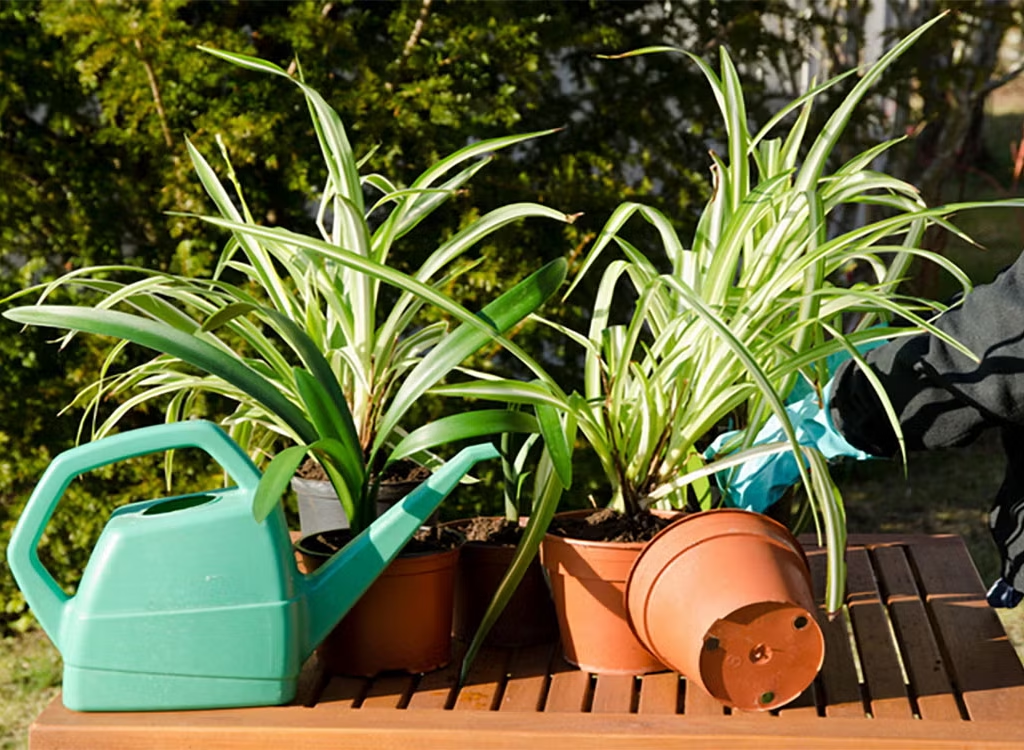
Spider plants are highly easy to propagate, making them ideal for expanding your indoor garden or sharing with friends.
Propagation Methods
- Plantlets (“babies”): Spider plants produce small offshoots that can be rooted in water or soil
- Stem cuttings: Cut healthy stems with a node and place in water or moist soil
- Roots typically develop within 2–4 weeks
Tips for Successful Propagation
- Use clean, sharp scissors to avoid infection
- Keep plantlets in indirect light while rooting
- Transplant rooted plantlets into well-draining soil for continuous growth
Propagation allows gardeners to multiply plants efficiently while maintaining robust greenery.
7. Pest and Disease Management
Spider plants are generally resilient but can occasionally face pests and diseases.
Common Issues
- Pests: Aphids, spider mites, mealybugs
- Diseases: Root rot from overwatering, leaf spots from fungal infections
Prevention and Treatment
- Inspect leaves regularly for pests and discoloration
- Wipe leaves with mild soapy water to remove insects
- Ensure proper watering, airflow, and well-draining soil to prevent fungal problems
Early detection ensures continued growth and healthy foliage.
8. Environmental Considerations
Spider plants thrive in average household conditions but respond best to consistent temperature and humidity.
Optimal Conditions
- Temperature: 55–80°F (13–27°C)
- Humidity: Moderate; mist occasionally in dry climates
- Avoid cold drafts or sudden temperature fluctuations
Maintaining these conditions promotes steady growth, vibrant leaves, and resistance to stress.
9. Common Growth Challenges and Solutions
Spider plants are resilient, but some challenges may arise:
- Brown leaf tips: Usually due to over-fertilization, low humidity, or fluoride in tap water
- Solution: Trim tips, reduce fertilizer, use filtered or distilled water
- Slow growth: Caused by low light, compacted roots, or nutrient deficiency
- Solution: Repot, adjust light, fertilize moderately
- Yellow leaves: Overwatering or poor drainage
- Solution: Allow soil to dry between watering and ensure proper drainage
Understanding these challenges allows gardeners to correct problems promptly and maintain healthy, thriving plants.
Conclusion
Caring for spider plants involves a combination of proper watering, suitable lighting, nutrient-rich soil, pruning, and propagation techniques. These resilient plants offer ease of maintenance, decorative appeal, and air-purifying benefits, making them ideal for homes, offices, and classrooms.
By following these detailed care practices, anyone can enjoy long, arching vines, vibrant foliage, and a thriving indoor plant collection. With consistent attention to watering, light, nutrients, and general maintenance, spider plants will not only survive but flourish, providing beautiful greenery that enhances any living space.
Spider plants are a perfect example of how simple care routines can result in stunning, low-maintenance indoor gardening success. With patience and proper attention, your spider plant will continue to produce lush, cascading leaves for years to come, enriching your home with both beauty and healthier air.





